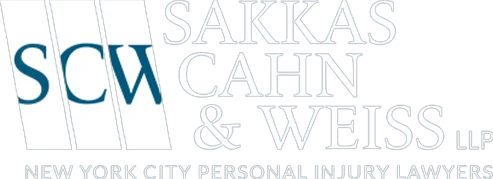Mayor de Blasio’s “Vision Zero” program to stop fatalities is more like a “Zero Vision” program

Sometime in 2014, at the beginning of New York Mayor Bill de Blasio’s two terms, he claimed traffic accidents had gotten out of hand (they hadn’t), and he pledged to bring road deaths in New York City down to zero by 2024, “through engineering, enforcement, and education. He called the program … wait for it… “Vision Zero”.
After initially taking an alarmist position to convince New Yorkers this was a genuine problem (you will see later, it really wasn’t), de Blasio advocated for, put into effect and spent a ton of money adding police cameras at intersections, configuring new street designs, shutting certain roads (or portions thereof), and organized public outreach and education programs. He also pledged to enforce moving violations.
Taking an alarmist position on New York City’s auto accident status
Table of Contents
- Taking an alarmist position on New York City’s auto accident status
- The reality of New York City’s accident history
- The accident, injury and death rate have remained pretty constant
- Why did deaths really go up this year? More foot traffic, e-bikes, scooters and SUVs
- The Mayor’s office has made the problem worse
- Conclusions to be drawn
Although, de Blasio’s plan had some initial success (all things are relative), this past week the New York Post ran several articles with studies showing New York City’s 2021 traffic accidents, injuries and deaths had “spiked” (let’s keep this word nearby for a minute), blaming de Blasio, and calling for the next Mayor to take more action to make the streets safer. Personally, not politically, I’m not a de Blasio fan. During his two terms, he has been an ineffectual leader, and left the city in its worst state since the early 1980’s – which is how I judge things, by focusing on results, not promises – I’m a “bottom line” guy. But, in fairness, he did attempt to make our streets safer (although one can argue his methods were expensive and misguided).
Do I agree with the New York Post then? Not so fast. Over the years, it’s gotten kind of hard to trust the Post. While I’ll swear by the sports section and Page 6, I have also come to realize that it is a Republican-centric newspaper that likes to take an alarmist approach to “all things Democrat” and blames de Blasio, Cuomo and Biden (Joe and Hunter) for everything wrong in the universe, when they aren’t rallying for “Trump 2024.” So, who is right, de Blasio, the Post or none of the above? Let’s dig deeper.
The reality of New York City’s accident history
As I said, I focus on the bottom line – and frankly, no matter whether you’re listening to the de Blasio administration or the New York Post, the analysis is not surprisingly skewed to make you, the residents of New York City, scared and angry.
But what do the actual numbers say? They show that accidents, serious injuries and deaths went down slightly the first few years of de Blasio’s first term. But, as you will see, that could have been the work of the administration, or it could have simply been a trend, like the weather – some years are just colder. And, yes, deaths have climbed a little bit this year – but they didn’t “spike” – and there are some legitimate factors one has to consider when factoring in even a slight increase. Let’s take a look:
- New York City typically has a total of 9.8 million people using the streets of New York on a daily basis (8 million residents; 180,000 daily tourists; and 1.6 million daily commuters).
- In 2018, there were 277,971 car accidents in NYC, with 2,700 people seriously injured and 197 killed.
- In 2019, there were 206,754 car accidents in NYC, with 2,600 people seriously injured and 214 killed.
- In 2020, there were 110,384 car accidents in NYC with 3,000 people seriously injured and 204 killed.
- And as of 9/1/21, there were 131,840 car accidents in NYC with 1700 people seriously injured and 177 killed – if these numbers stay steady until years end, the projections would be 199,757 accidents, 2,575 seriously injured and 268 killed.
The accident, injury and death rate have remained pretty constant
What can we take away from this analysis? Well, first there are no real “spikes.” In fact, the number of car accidents in NYC varies greatly each year. As for those seriously injured, the numbers are pretty constant, running a tight 2,575 – 3,000 per year. The surprise here, one that never got analyzed, is that in 2020, when the streets were empty due to a pandemic, and accidents were down 50%, those seriously injured in auto crashes were actually at their highest (spoiler alert – if traffic was down 70% people, that enabled people to drive much faster and, in turn, have bigger accidents – am I the only one who truly gets this?)
As for deaths, the numbers have ranged between 197 – 268, with the latter coming this year. One can argue that is a 25% spike bottom to top, but I’d argue that when compared to the 9.8 million daily street dwellers, the % of deaths is only .00002 – that equates to 1 out of 43,500 commuters dying in an accident. That doesn’t make it any easier for the victim’s families, but still, it shows that the numbers are quite modest for the size of this mega-city we all call home.
Why did deaths really go up this
year? More foot traffic, e-bikes, scooters and SUVs
So, in contrast to the term “spike,” in reality accidents, injuries and deaths have barely moved in any one direction in any recent year. Now, why did they increase over the last year? Well, let’s look at the world in general and NYC specifically. We just came off arguably the greatest life-altering event in the last 100 years (outside of wars), and people are distracted and frazzled, so that might account for some more accidents.
I will also suggest that New York’s subways have gotten more terrifying in the last 18 months, causing more pedestrian foot traffic (and potential victims) to come above ground in an effort to find alternative ways to commute the boroughs. There are also a lot more cyclists (our city has become more biker friendly), and a 300% increase in the use of electric scooters and e-bikes (which are so quiet that you don’t hear the sound of its electric motor until just before it runs you over). If you are shooting fish in a barrel and you add more fish, then guess what? You’ll shoot more fish. Ta da – like magic, we start to see the cause of this accident increase, road redesign and police cameras be damned.
Let’s keep our thinking caps on – with so much more street traffic, you also get more gridlock. Guess what happens when a frustrated driver, standing still endlessly, sees an opportunity to make a light or get around a parked car? They gun the engine, and make a run for it, which can often lead to something bad, like… I don’t know… a car accident. Isn’t this all starting to make sense now?
Finally, if you are looking at more serious injuries and more deaths, may I suggest the culprit is SUVs. There has been a 25% rise in the use of these vehicles in recent years. They weigh a lot more than cars, are harder to steer and control and have larger blind spots – hit me with a Mini-Cooper, the car will need repair, not me. Hit me with an SUV, and I will require an ICU.
The Mayor’s office has made the problem worse
Now, to actually pin one on de Blasio’s poor mayoral management, in recent years he has cut and alienated the police force with barbs, insults and less funding. He has also allowed the courts to be more lax with criminals. On top of that, the pandemic brought criminal courts to a standstill. The end result: Far fewer police patrolling our streets and criminals being released back on the streets due to new policy or prison overcrowding.
One example that comes to mind is when, several weeks ago, a driver who had racked up more than 90 speeding tickets near city schools and habitually failed to stop at red lights, killed a 3-month-old girl in a hit-and-run in Brooklyn. Had he been properly handled by the police and courts that would be one less death on New York City’s docket. You can change intersections architecturally and educate, but if you don’t deal with the “real problem,” accidents will climb.
Conclusions to be drawn
At the end of the day, de Blasio told us that New York City had a real traffic accident problem (we didn’t). Then he created an expensive platform to fix a problem that didn’t need fixing. The New York Post jacked things up when they told you the problem was getting worse (it wasn’t) and created needless hysteria. Both positions get the public all in an uproar for their own agendas.
So, was Vison Zero, even if it worked, really worth it? Look, I’m all for safety, but it has to make sense.
Let me end by posing this hypothetical to you: If the government closes roads, adds bike paths, extends traffic light timing, and adds officers at intersections, we can agree that will save a few lives a year. But, if these “visions” add to already ridiculous gridlock, preventing ambulances from getting sick patients to hospitals, firefighters getting to fires early, and EMT’s from quickly getting to accident victims, then isn’t it possible that these expensive, but well-intentioned platforms, will cost us far more lives?
We will never get anything in New York City down to zero, but we should focus on existing methods to help our city. Stop trying to scare us into fancy plans that cost people money, making them flee to the suburbs.
Get A Free Case Review
Fields marked with an * are required
"*" indicates required fields
110 East 42nd Street
Suite 1508
New York, NY 10017
Phone: 212-571-7171
Fax: 212-571-7174
1461 Franklin Ave, Suite 2SE
Garden City, NY 11530
Phone: 516-747-7472
Fax: 212-571-7174

